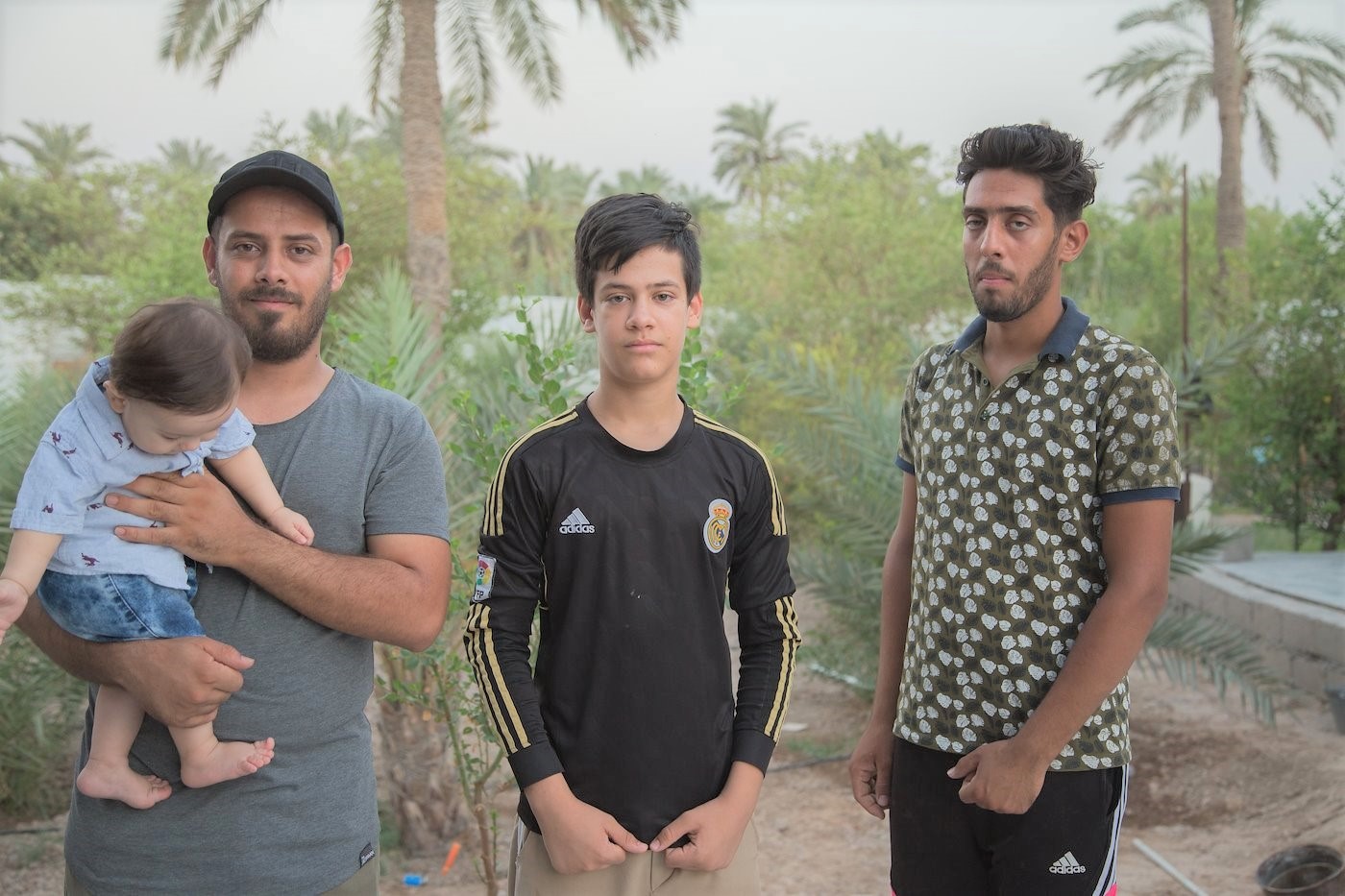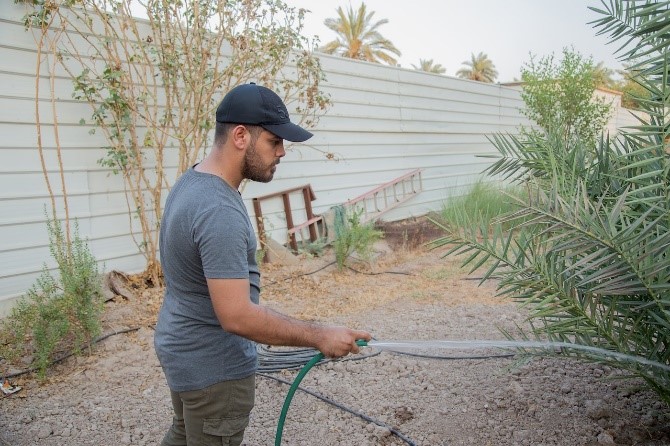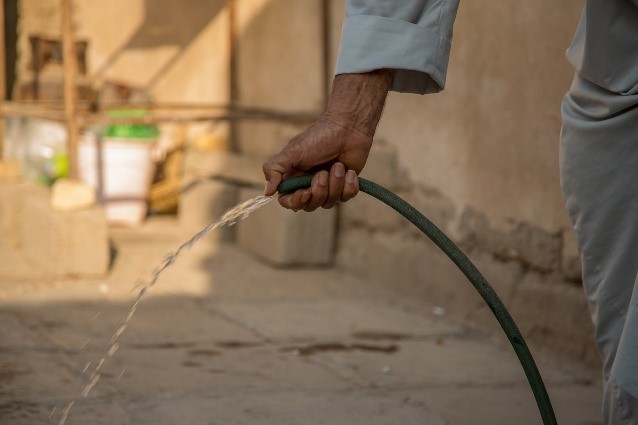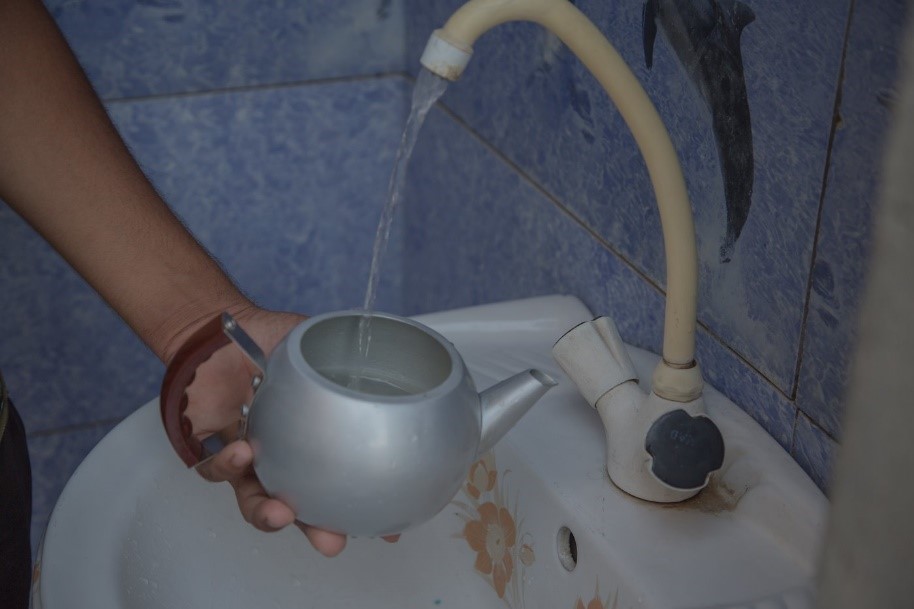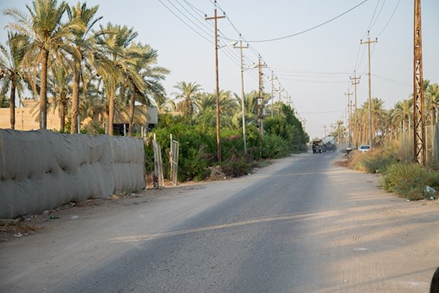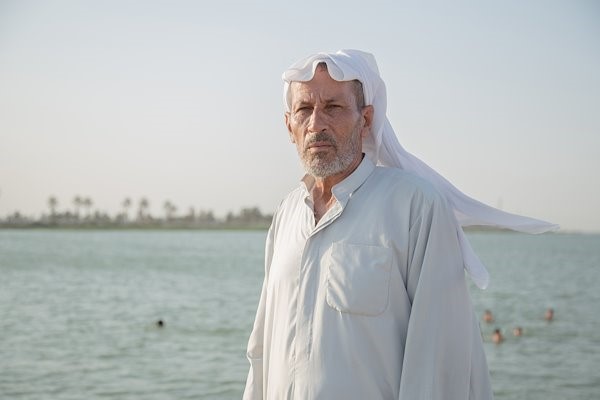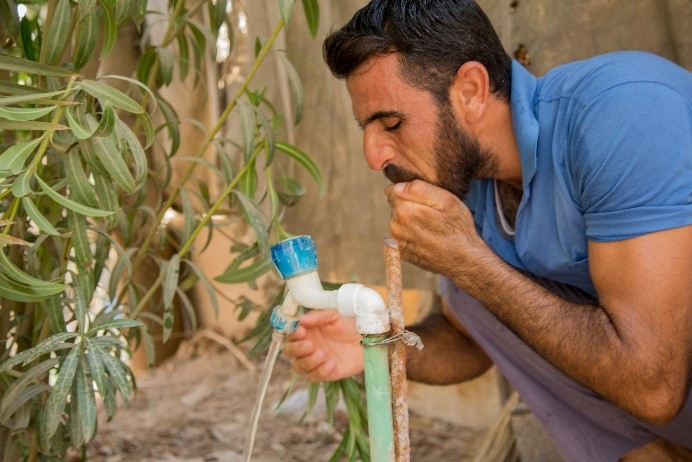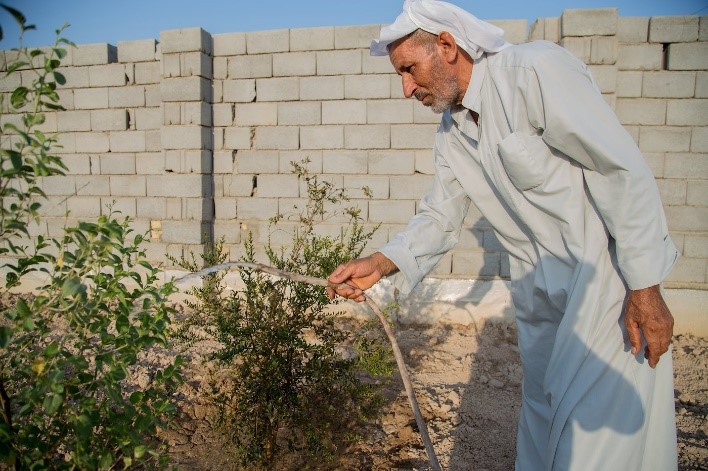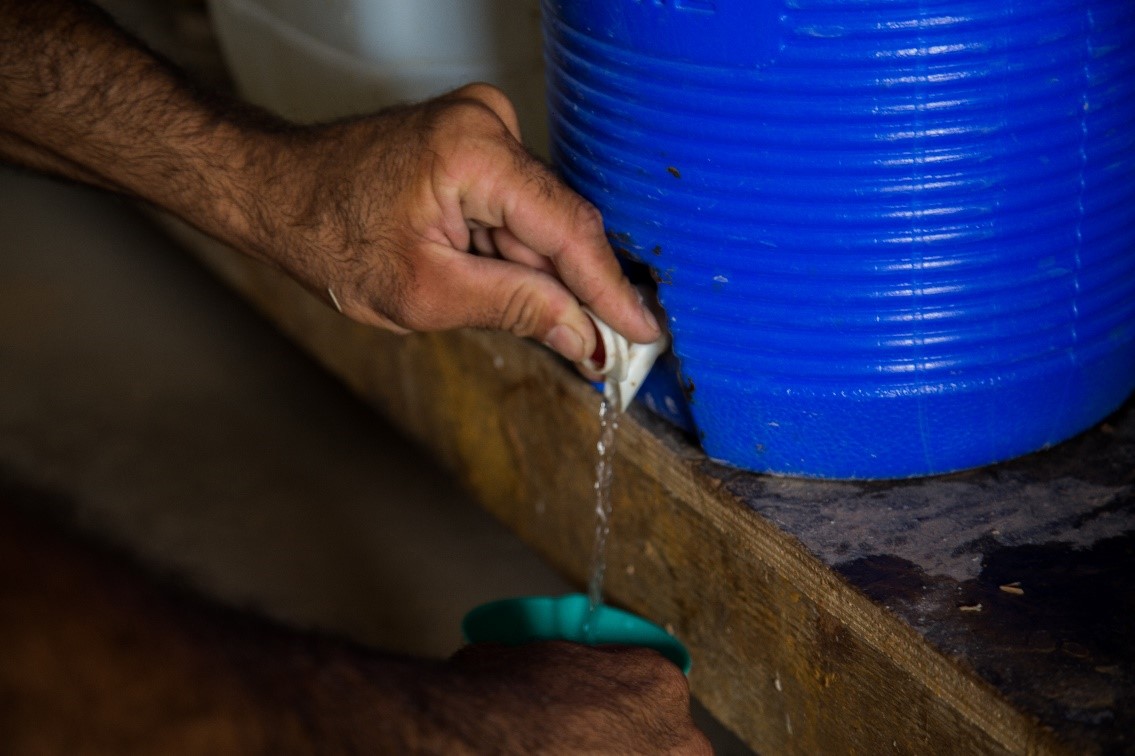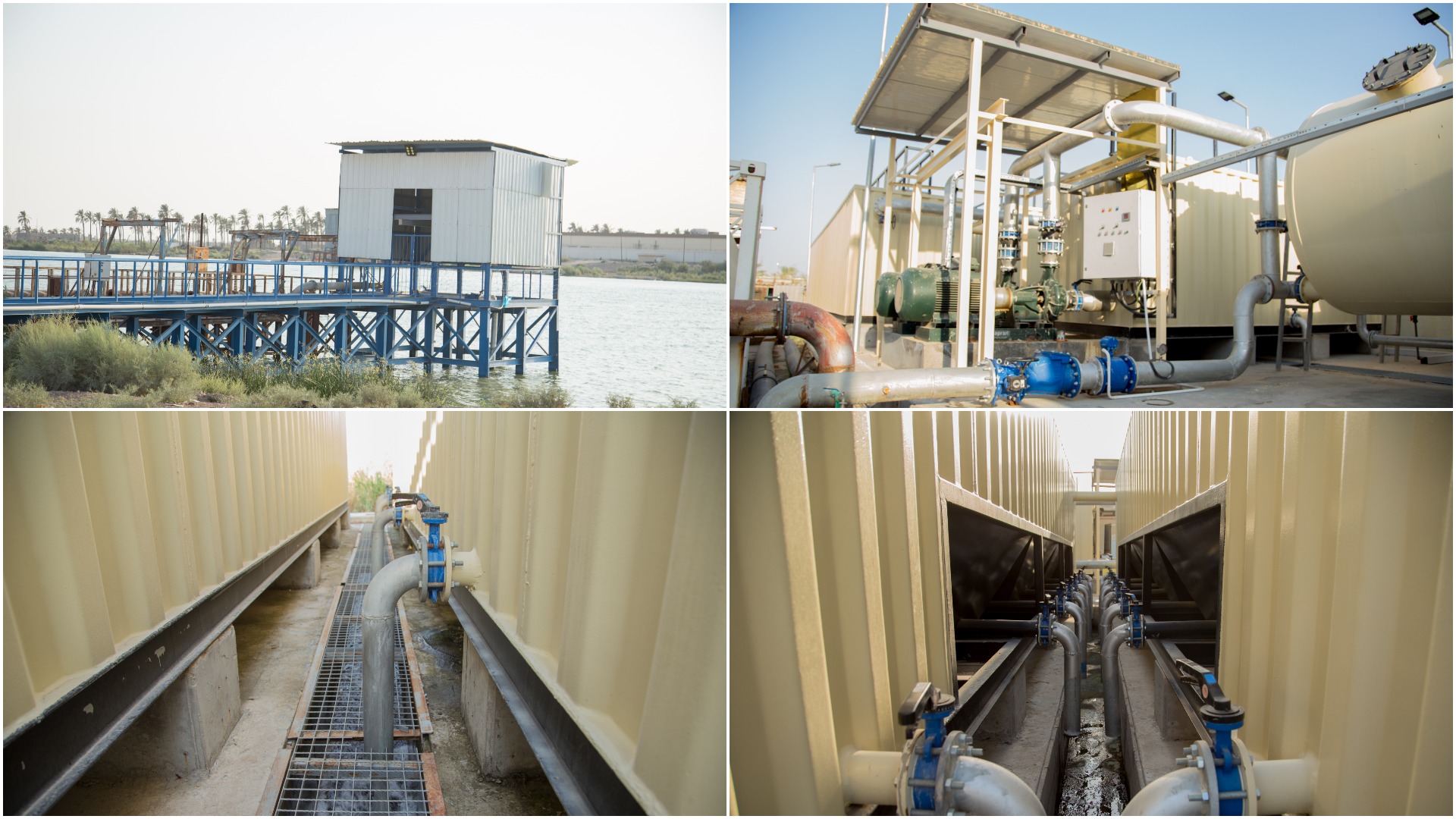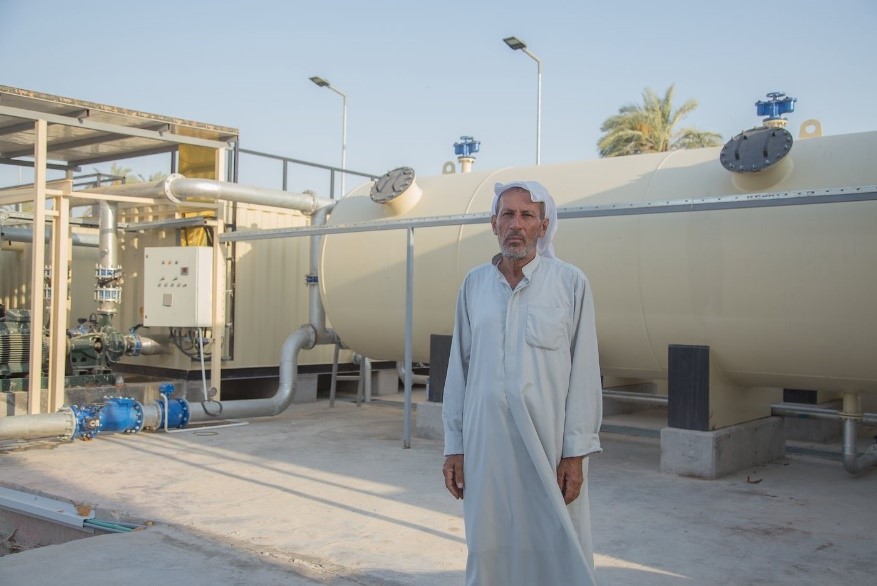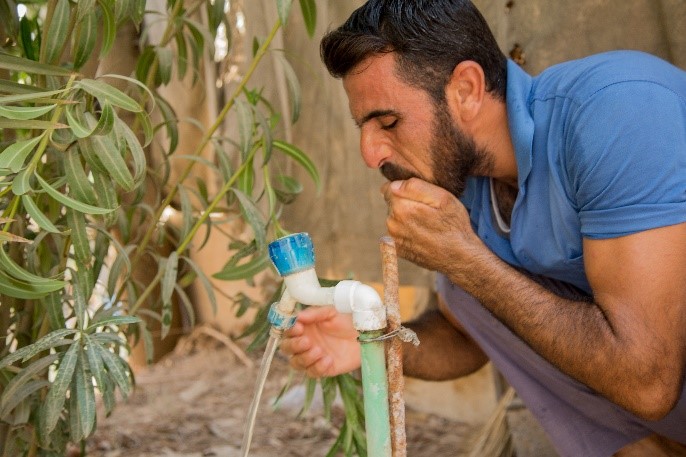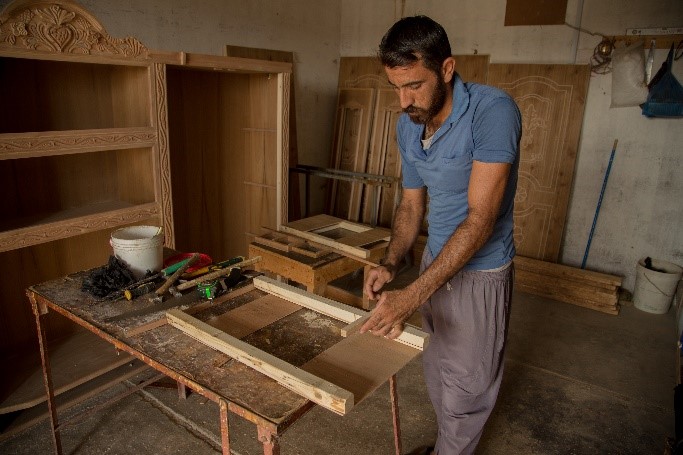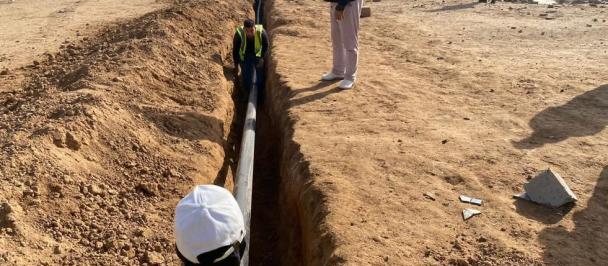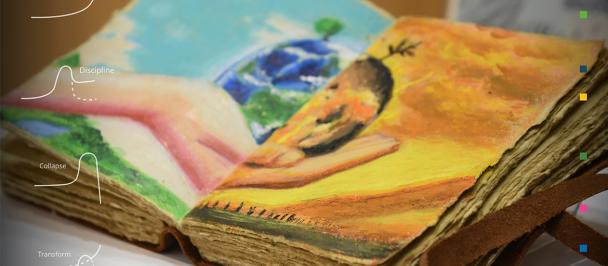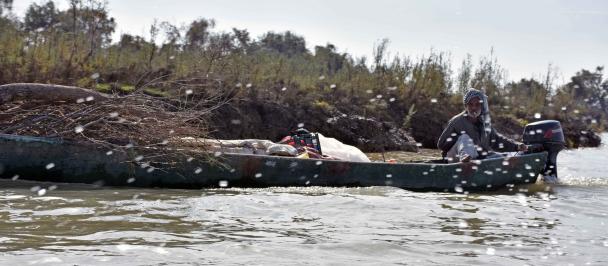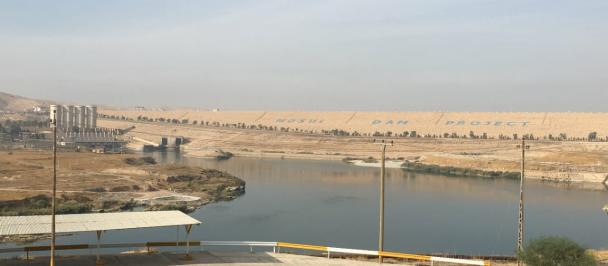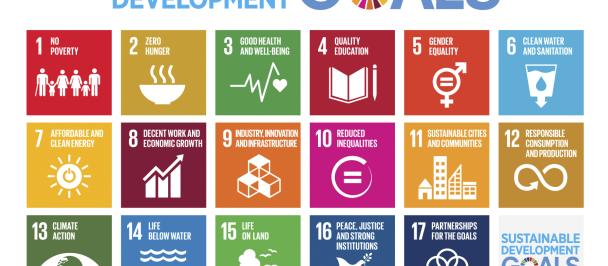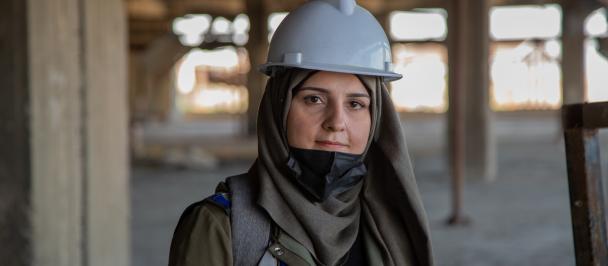How UNDP’s support in Iraq helped end a water crisis and restore hope.
Ali Sattar with his brothers and nephew outside their home in Basra. Photo: UNDP Iraq
Al-Huta is a village in southern Iraq near the Port of Basra. It is home to Ali Sattar, a 28-year-old man working in finance and administration at one of Iraq’s largest oil fields west of Basra.
Ali lives here with his wife and their three children, along with his parents and three brothers. The palm tree-lined streets that lead to their home are on the banks of the Shatt al-Arab river.
With easy access to freshwater from the river, residents of Ali’s village relied on farming as their main source of income for generations. The broader Basra region also relies heavily on the Shatt al-Arab river and its freshwater canals for water.
Paradoxically, while water is the source of many livelihoods here, for decades, drinking it was life-threatening. Poor management of water distribution, increasing pollution levels, sewage dumping, and outdated water infrastructure all contributed to the steady deterioration of waterways.
Ali Sattar waters his farm. Photo: UNDP Iraq
Nazim waters his farm. Photo: UNDP Iraq
The 2018 water crisis was the culmination of decades of overuse, pollution, and reduced rainfall from climate change. Basra’s water source became severely contaminated, and 118,000 residents went to the hospital due to water poisoning.
Ali Sattar refills his tea pot with clean drinking water that comes directly to his residence. Photo: UNDP Iraq
The situation was aggravated by unsustainable water use for irrigation and by industries. This lowered water levels, allowing seawater to seep into freshwater sources, making it unsuitable for people to drink or grow crops.
The paved road leading into Al-Huta neighbhourhood in Basra. Photo: UNDP Iraq
Walking along the paved road leading to his neighborhood, Ali admires the palm trees and points to vast farmlands, including fields of date palms belonging to his friends and neighbors, Nazim Yousif, 65 and Mustafa Mohammad, 25.
“We suffered from the contaminated water,” Nazim says. “We were unable to grow our crops, and the soil quality was affected.”
Nazim Yousif. Photo: UNDP Iraq
Mustafa Mohammad. Photo: UNDP Iraq
Adding to what Nazim shares, Mustafa adds, “The water station in our locality was out of service. We used to only get water during select hours in the evening.” He currently runs a carpentry shop out of his residence.
Facing not only a water crisis but an impending food emergency, Ali, Nazim and Mustafa sprang into action with other neighbors. They pooled funds to purchase weekly deliveries of tankers of clean water to ration equally among households.
A single tanker serving around 10 homes costs up to US$ 400 a week, the equivalent of one farmer’s monthly salary. Though it was expensive, it was the only way they knew to keep their families and their community safe and healthy.
“We are a close-knit community that has stuck by each other through thick and thin,” Ali said.
Nazim Yousif waters his farm. Photo: UNDP Iraq
While Ali, Nazim and Mustafa were ready to do anything for their community, they also knew that they needed to find a sustainable solution.
In response to Basra’s water crisis, United Nations Development Programme (UNDP) in Iraq with funding from USAID rehabilitated nine of Basra’s major water treatment plants located in the districts of Shatt Al-Arab, Ezaldeen Saleem, Al Medina, Deer Al Saleem, and Abi Al-Khaseeb.
Mustafa stores the clean water he received directly to his home in drums. Photo: UNDP Iraq
Today, the UNDP-rehabilitated treatment plants have been rebuilt to meet local and international standards. The system filters and adds chlorine to water drawn from the Shatt Al-Arab River before dispatching it to communities through a central piping system.
The renovated treatment plants are bringing safe, clean water to more than 625,000 residents of Basra.
For Ali, a monthly supply of potable water now costs around US$ 30, which is about 25 percent less than the cost his family paid to receive clean water delivered via tanker.
"Now, life is different for us,” Ali says. “We can get as much water as we want, whenever we want, without worrying if our family members will fall sick. However, we need to be careful with how we consume water."
Nine of Basra’s major water treatment plants have been rehabilitated with USAID’s generous support. Photo: UNDP Iraq
Renewed access to clean water has also revived Nazim’s farm and Mustafa’s business.
“I am slowly building back my business,” Nazim says. “I cannot believe that my life has turned back around in such a short period.”
Nazim stands inside the Shatt Al-Arab water treatment plant. Photo: UNDP Iraq
For residents of Basra like Ali, Nazim and Mustafa, the water treatment rehabilitation project has reinvigorated a community that was spiraling into despair. Water has become a symbol of resilience, hope, and solidarity for their community.
“My special message to residents of Basra is to be mindful of water consumption. Every person on earth needs water to survive. Without it, we will not survive. Conserving water is key to keeping water pure and clean while protecting the environment. We need to preserve these resources for the future generations to come,” says Mustafa before he takes a sip of water.
Mustafa drinks clean water. Photo: UNDP Iraq
Mustafa's carpentry workshop. Photo: UNDP Iraq
About:
The rehabilitation is implemented through UNDP’s Iraq Crisis Response and Resilience Programme (ICRRP), with generous support from USAID.
The provision of basic services, such as safe potable water, is imperative to reduce vulnerability and address the needs of Basra's citizens, helping to rebuild ties between the population and the Government of Iraq. These rehabilitated water treatment plants are improving access to potable water for more than 625,000 Iraqi men, women, and children.
A version of the story was originally published on USAID’s Exposure platform here.

 Locations
Locations